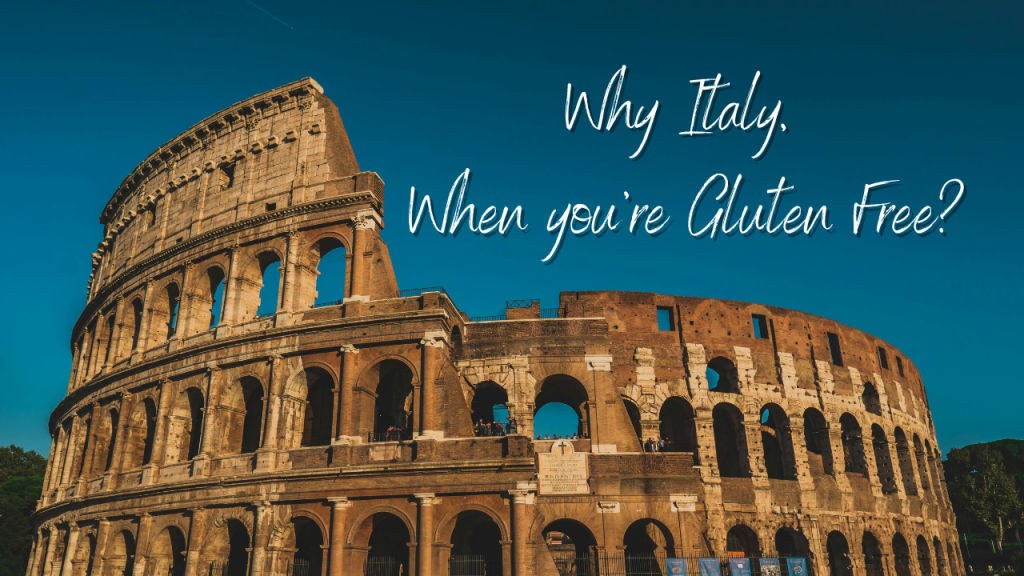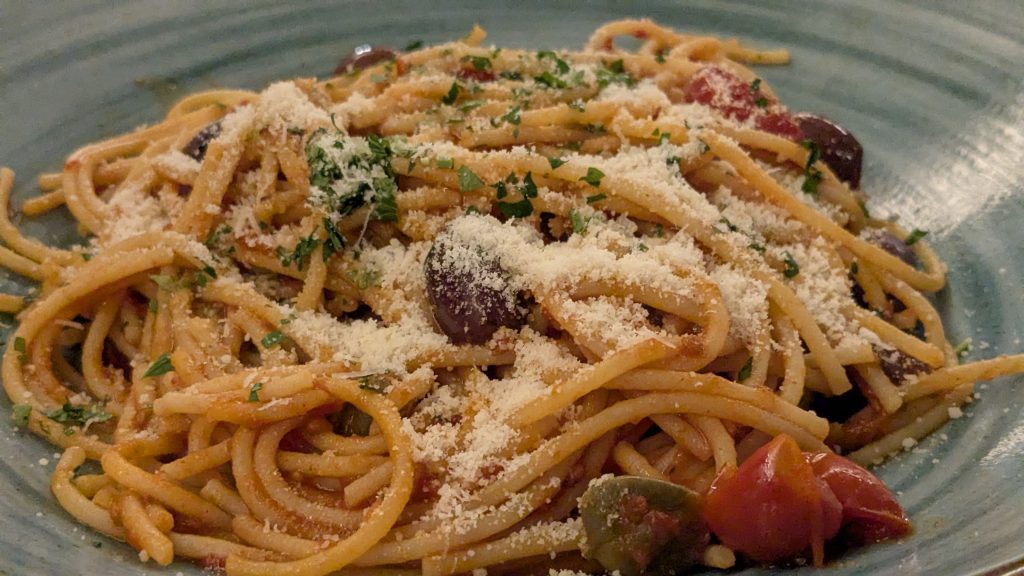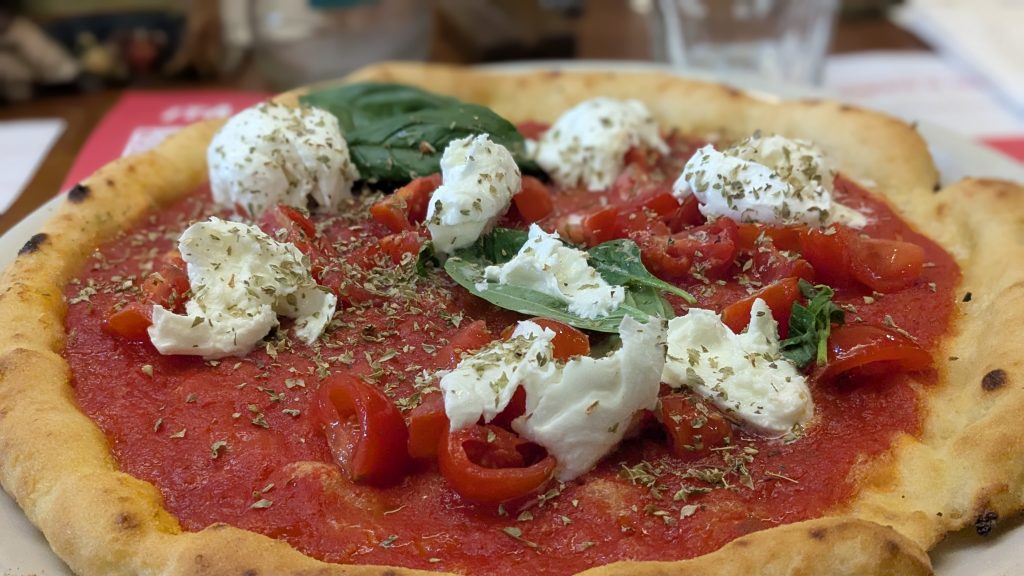Why Italy When You’re Gluten Free?

When most people think of Italy, they picture plates of pasta, fresh bread baskets, and wood-fired pizza. For someone who’s gluten free or living with Celiac Disease that sounds like a pipe dream that turns into a food nightmare.
But here’s the truth: Italy is one of the most gluten-free-friendly countries in the world.
I recently visited Italy, and as someone who was is officially diagnosed with Celiac Disease, I was admittedly quite nervous the land of pasta.
Would I be able to enjoy the food culture without getting sick? Could I safely eat out at the chic restaurants in the small towns around Italy? Would I spend my whole trip living off fruit and protein bars? Which is probably the saddest thing I can think of eating while I’m in the country that perfects pizza and pasta!
BUT! what I found was the complete opposite. And I was brought so much joy…and relief!

Italy Takes Celiac Disease Seriously
Celiac Disease awareness is incredibly high in Italy. In fact, it’s government-recognized and regulated. Children are routinely screened for it, and those who are diagnosed even receive a stipend from the government to buy gluten-free products.
Because of that, restaurants and shops understand Celiac Disease far better than in most other countries.
When I said “sono celiaca” (I have celiac disease), the staff instantly knew what to do. They reassured me about separate preparation areas, different utensils, and dedicated ovens for gluten-free dishes. They told me exactly what I could or couldn’t eat while I was there.
Gluten-Free Options Are Everywhere
It wasn’t just one or two restaurants in big tourist cities—it was everywhere.
Rome, Florence, Venice… even small towns like San Gimignano had incredible gluten-free crepes! The crepe was exactly what I needed!

You can easily find:
-
Gluten-free pasta and pizza at regular restaurants
-
Dedicated gluten-free bakeries with croissants, focaccia, and pastries
-
Supermarkets carrying gluten-free brands like Schär and local Italian ones
-
Gelato shops with gluten-free cones and safe labeling
I never felt left out or restricted. In fact, it was easier to eat safely in Italy than in many U.S. cities.
Even Pizza Is Back on the Menu
If I were to go all the way to Italy and fly more then 10 hours to get there, I better get some authentic Italian Pizza. For those that can’t wait to go to Italy, this is their dream! Pizza in Italy? Yes please! And I absolutely did get great gluten free pizza.
This pizza was NOT created equal to the pizza you would get in the US. It looked exactly like the pizza that the people in my travel group got. There was a slight difference in the amount that the crust blew up, but thats to be expected. I ate the whole thing with a smile on my face. It was delicious.
And the servers didn’t make a big deal out of it. It wasn’t a “special” menu or an apology—it was just another option. That normalcy felt amazing.

Tips for Traveling Gluten Free in Italy
If you’re planning a trip, here are a few things that made my experience even smoother:
Learn a few key phrases:
-
-
“Sono celiaca” = I have celiac disease
-
“Senza glutine” = gluten-free
-
-
Use the app “Find Me Gluten Free” for verified restaurant reviews.
-
Book hotels or Airbnbs near pharmacies or supermarkets. They always stock gluten-free options. (The bed and breakfasts or small hotels we stayed at tried their best to get me gluten free bread, but weren’t very successful. but I don’t really do bread in the morning anyway. just keep that in mind for when you book your accommodations)
-
Ask questions confidently. Italians respect honesty and will do their best to accommodate you.
You Don’t Have to Miss Out on Italy
Before my diagnosis, I used to think traveling with Celiac would mean constantly missing out. But Italy proved that isn’t true.
I enjoyed espresso in the morning, authentic pasta dishes for lunch, gelato in the afternoon, and wine with dinner, all gluten free and delicious.
If you’re gluten free and hesitant about traveling, Italy is the perfect place to start. It’s a country that understands food, takes dietary needs seriously, and believes everyone should be able to enjoy la dolce vita.
Just remember to communicate to the folks in the restaurant, and they’ll take care of you.
